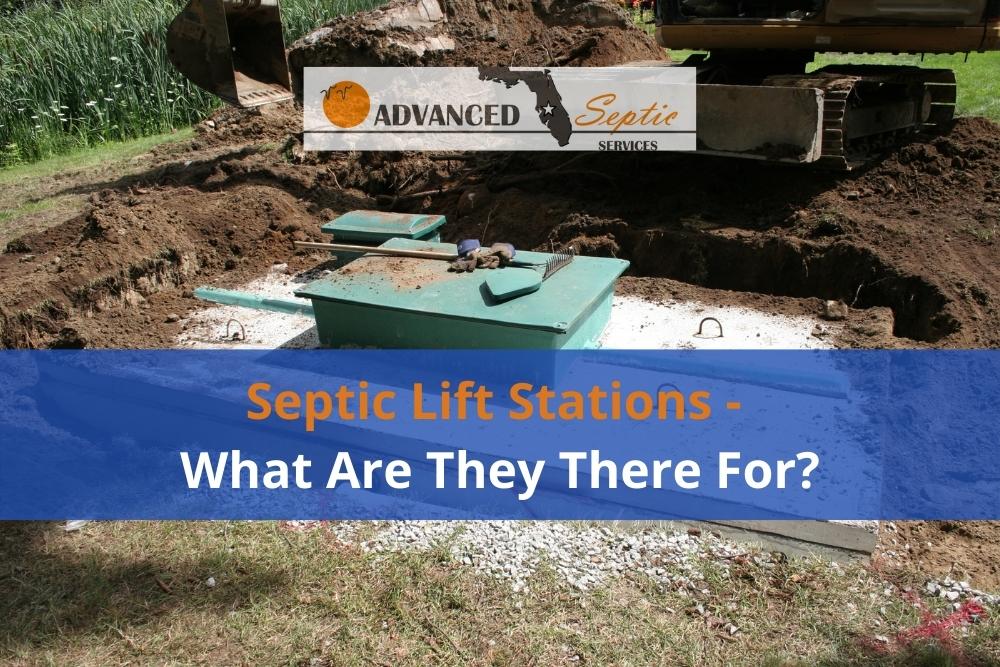Generally, homeowners don’t have much reason to be concerned with the inner workings of their septic lift stations until something has gone awry. These stations are an integral part of the sewage system. They can quickly become an emergency should something fail due to a lack of preventative service.
Lift stations are responsible for moving wastewater from a lower elevation to a higher one. The nature of gravity forces the necessity of such a system to be in place for the waste to reach its next destination, usually a water treatment plant or drain field.
The complex system of controls, pumps, and valves enables a lift station to function correctly. Routine inspection and maintenance are recommended to ensure there are no issues and, when there are, that they’re dealt with efficiently.

What is a Septic Lift Station?
Essentially, a septic lift station transports raw waste material from a lower elevation point to a higher one. Despite Florida being relatively flat, this system is still necessary, and the state has one of the highest concentrations of lift stations in the country.
They’re often used in both municipal and commercial systems, as well as residential areas. The wastewater can be pumped up to a height that allows gravity to do the remainder of the work as it travels to its next destination, the leach field.
If you’ve never seen a lift station before, this is because they’re often housed underground to avoid excessively releasing any unpleasant odors. They can also release toxic gasses, such as carbon dioxide and hydrogen sulfide.
Lift stations can save a great deal on the front-end, as the excavation of underground pipes is often expensive. Adding lift stations to specific junctions of the septic pipeline system can help reduce the overall strain on the underground infrastructure.
How Do Lift Stations Work?
Lift stations are designed using a series of pumps, motors, and compressors. When the raw sewage reaches a predetermined level in the septic tank, a sensor is triggered that turns the pumps on and begins moving the wastewater.
Pumps are either external or submersible, but they both work similarly. There also tends to be a backup generator, which enables things to continue moving along if there is an issue with the primary power source (a necessity for many septic owners in Florida during hurricane season).
The Importance of Lift Station Maintenance
The environment within a lift station is somewhat corrosive, which can spell trouble for the controls and electronic functions of the system if left to fall into disrepair. Scheduling regular maintenance on your system can minimize wear and tear and prevent an avoidable failure within the system.
This maintenance can include inspecting the control panels, cleaning the floats, and checking for any signs of buildup within the wet well. If given the opportunity, oil and grease can build up, resulting in a blockage that releases a foul smell into the outer environment.
Due to the complex inner workings of a septic lift station, neglecting routine maintenance can result in a costly repair should one of the pumps or motors stop functioning.
When a lift station fails, wastewater can quickly collect and build up. This can create a situation that needs to be addressed ASAP before further damage is done.
Need a Septic Lift Station Inspection? We’re Happy to Help!
Our experienced team members at Advanced Septic Services can provide an inspection of your lift station and provide you with the peace of mind that everything is running smoothly. We can take care of any buildup, clear potential blockages with a pump-out, and troubleshoot other issues.

